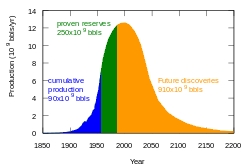Green Revolution
The Green Revolution was a spread of food security technology by Norman Borlaug, who earned the Nobel Peace Prize in 1970. He is said to have saved over a billion people from starving to death, from the 1930s to the 1960s.[1]
It was done by the creation of different types of cereal grains which grew more food than average. Also, there was more use of modern systems for watering crops. Food management was made more modern. The spread of hybridized seeds, man-made fertilizers, and pesticides to farmers all helped.
Background
In the 20th century, big spending in modern and scientific research for agriculture led to the growth of more food in industrial countries. The Rockefeller Foundation and Ford Foundation helped to change these scientific technologies to fit the conditions in developing countries. The first research was on rice and wheat, two of the most important food crops for developing countries. Irrigation and the growth of better plant types, in addition to more use of fertilizers and pesticides, led to more food growth in Asia and Latin America, starting in the late 1960s. The term “Green Revolution” was used to mean the large growth in agriculture that happened at this time.[2] The curse part of this reference can now be seen, as population has grown so that problems remain, but with an increased population.
Green Revolution Media
After World War II, newly implemented agricultural technologies, including pesticides and fertilizers as well as new breeds of high yield crops, greatly increased food production in certain regions of the Global South.
Locations of Norman Borlaug's research stations in the Yaqui Valley and Chapingo.
Wheat yields in least developed countries since 1961, in kilograms per hectare.
World population supported with and without synthetic nitrogen fertilizers.
M. King Hubbert's prediction of world petroleum production rates (1968 peak of USA, 2005 World conventional oil peak, 2018 all liquides including corn to oil peak). Modern agriculture is largely reliant on petroleum energy.
References
- ↑ Hazell, Peter B.R. (2009-01-01). The Asian Green Revolution. Intl Food Policy Res Inst.
- ↑ Green Revolution: Curse or Blessing?






